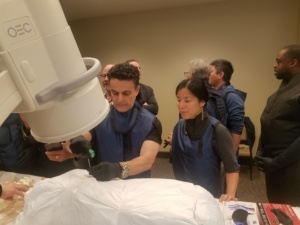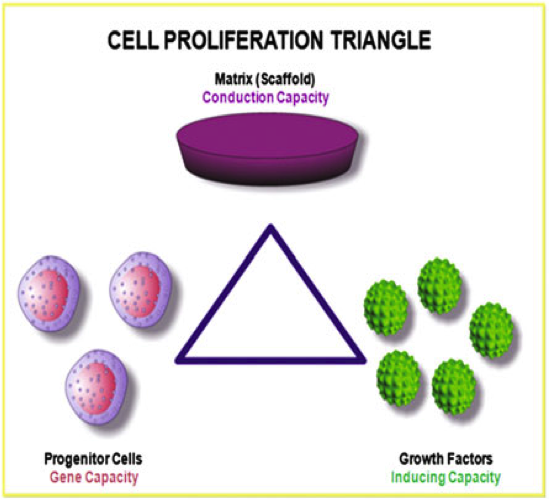Facts vs Myths of Regenerative Medicine
Regenerative medicine is an emerging branch of medical science which deals with the functional restoration of tissues or organs. For musculoskeletal medicine, it addresses healing pain by promoting a regenerative environment for your muscles, tendons, bones, ligaments.
Regenerative medicine will not create a new joint or new spinal cord for you. Research is in progress and making great leaps. Talk to your doctor to see if you are a good candidate.

Regenerative Medicine Building Blocks
Matrix, Growth Factors, Stem Cells

You need these 3 building blocks working together to regenerate muscle, bone or tissue. Although we can’t give you a new back or a new knee, by using any one of the 3 building blocks, pain can be alleviated.
- Matrix (Scaffold): This is the matrix that the stem cells need to grow into bones, muscles, cartilage. Hyaluronic acid which is currently used for knee osteoarthritis (OA) as “lube for the knees” can be thought of as a matrix.
- Growth Factors/Cytokines: These are the signals that are secreted and promote a regenerative healing environment. These signals tell the stem cells to turn into functional tissue (ex. bone, muscle, tendon, blood vessel). Platelet-rich plasma (PRP) consists of concentrated platelets and growth factors that promote healing and regeneration of injured tissues. To harvest the solution, a small sample of your own blood is drawn in a sterile manner and then centrifuged (spun out) at high speeds. What is left over is the growth factors and platelets, which promote healing. PRP is injected back into your joint, tendon or lumbar disc to help reduce pain.
- Stem Cells/Progenitor cells: Stem cells are the cells which turn into various tissues and organs in your body. Stem cell therapy uses your undifferentiated mesenchymal stem cells which promote repairing of damaged tissue. A high volume of bone marrow is drawn from your bone with local anesthetic. Your bone marrow is then centrifuged and a concentrated solution of your stem cells is injected back into your damaged tissues to help with conditions such as arthritis, bulged discs, ligament tears (ex. rotator cuff) and nerve pains.
Regenerative Medicine Good Candidates
- Mild-moderate joint degeneration: Ex. hip arthritis, knee arthritis, hand/foot joint arthritis
- Mild-moderate Rotator cuff tendinopathy
- Disc disease without nerve impingement
- Other conditions: consult with your physician first